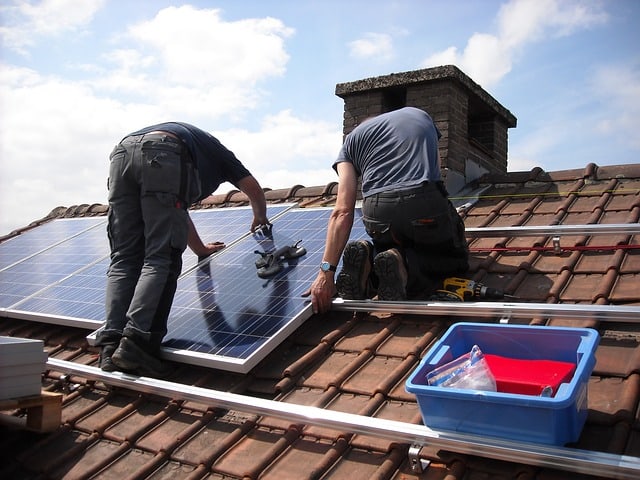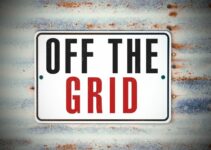Thanks to the programming variety on HGTV, home renovations are being taken on by just about anybody. However, they’re much tougher than they seem, especially if you want to go green. You should almost always leave these projects to a professional. The good news is that there are easy ways to lower your energy bill if you already have a home reno project in the works. Greening up your home won’t just save you money on energy bills. It will also increase the value of your home, possibly boosting your asking price or putting you in a better negotiation position should you decide to sell or rent later on.
Green is big business, and should be at least a consideration for anyone with a renovation project on their mind. No matter where you live or what your budget looks like, there’s a smorgasbord of tips to lower your energy bill. Consider these renovation approaches if you want a decent side of good karma with your home upgrade:
- Swap out your appliances for green-friendly options. One of the biggest home value boosters is the kitchen. Having a gourmet kitchen has gone from a rarity to the norm. However, in addition to having stove-top cookers, double ovens, and the latest state of the art technology for whipping up everything from macaroons to a roast, you should also think about appliances that save money in the kitchen.
Lower water-usage dishwashers are a great way to decrease energy bills while making your kitchen look like something out of a model home. You might also want to check out switching from electric to gas, as this taps into a better source of energy while also taking advantage of what many consider a cleaner, more even cooking option. Keep in mind that it will take a little time to adjust from electric to gas (or vice versa). However, if anyone in the home is a serious cook, or if you’re planning to sell, going with gas isn’t just friendlier to the environment but also guarantees much better dishes.
- Give your toilet and shower a slowdown. Bathrooms are another big ticket item, with home searchers looking for a virtual oasis in their future abode. Bathrooms are expected to serve as a slice of paradise where primping and pampering reign supreme. However, there’s a lot more to a luxury bathroom than “just” slab countertops, radiant heated floors, and plenty of natural light. Upgrade your bathroom to feature a low-flow toilet and water-savings shower to be kind to the environment and also save a pretty penny on your energy bill.
The vast majority of homeowners could do without that uber-flush for most of their bathroom activities. And their showers? It all depends—but in many cases, you could benefit from a shower head that isn’t designed for maximum impact. In addition to the actual shower head, also consider the water heater or preferred water-heating source for your hot shower water. A boiler in lieu of a furnace can work wonders on your “green rating” and water bill.
- Is it boiler time? Most homeowners in the U.S. have a furnace instead of a boiler, and with good reason. Boilers can cost substantially more than furnaces, and that’s an upfront investment most homeowners aren’t willing to make! However, boilers trump furnaces easily when it comes to comfort and silence, making them an easy choice for those looking for a touch of luxe during a renovation. Boilers offer hydronic radiant heat, heating up water that’s circulated via PEX or copper tubing throughout the home. You can “feed” boiler tubes through baseboards, walls, ceilings, or the floor, making this one of the most flexible heating options. Although wall and ceiling heating approaches are rare, you can certainly customize as you see fit.
In-floor heating is by far the most popular, and common in southeast Asian countries. It helps keep heat low to the ground (where it belongs) instead of letting it all go to the ceiling. Plus, warm floors means that your feet are instantly warmed in cooler months. Americans consider radiant-heated floors a rare treat, but with a boiler it will soon become just another cozy day in your renovated home.
- Look sky-ward. When’s the last time you had your roof inspected or upgraded? For many homeowners, it’s one of the most expensive fixes, but it’s to be expected in any home after a couple of decades. If your roof could do with a replacement, make sure this upgrade counts. Two options can help you decrease energy bills: EPDM roofing and a few solar panels.
EPDM is a very durable, safe synthetic rubber made from ethylene propylene diene terpolymer (thus the moniker) and is popular around the world for low-sloping buildings. Made largely of ethylene and propylene (oil and natural gas), it’s available in black, white, and can be purchased in a variety of widths and thicknesses. It’s a fantastic insulator and also deflects UV rays, helping to keep homes cool in the summer and warm in the winter. It’s also one of the heartiest options out there, outlasting most standard roofing materials. You can personalize it to be any color you imagine, making it one of the most customizable possibilities out there.
Solar panels are well-known, but the rules and regulations vary based on where you live. In some states, you can sell any un-used power “back to the grid.” There are also some very sunny regions where it’s possible to get all the electrical power you need from solar panels. In other regions, solar panels are more reasonable as a supplement. Check with your CPA about tax credits and write-offs for solar panels or any energy saving addition. The IRS is always changing these write-offs, and you want to make sure to maximize your benefits. If you’re thinking about solar panels, act fast—many IRS benefits are being faded out by 2020.
- Window and door upgrades. Are windows and doors expensive? Yes, if you’re going for quality. However, what homeowners often don’t realize is that windows and doors can be an investment. It’s where many homes lose much of their cooled or heated air. It’s common to be unable or unwilling to upgrade all doors and windows at once—but you don’t have to. You can swap out existing doors and windows for ENERGY STAR rated doors and windows one piece or one room at a time. In the meantime, close off any rooms you don’t use on a regular basis. Make sure these rooms are “sealed.” Placing a towel at the base of doors is usually more than enough to keep these rooms secluded.
Want even more insulation and protection? You can always upgrade your insulation. The best, most efficient insulation is spray foam. It’s applied directly to areas, is completely safe, and expands to completely fill the problem area, making it possible to cover any nook or crevice your hot or cold air is escaping from. The most common insulation is fiberglass. You might also find mineral wool, polyurethane foam, or polystyrene. These options are more affordable, but come at the cost of letting your costly heat or cool air leak. If you really want to make the most of your cool summers and cozy winters, foam spray is the only option.
Any renovation comes with a host of considerations. What are your budgets, goals, and what do you want the end product to look like? Not all final renovations come with an obvious upgrade. Some of them fly under the radar and show up in your carbon footprint and energy bill. Increasingly, homeowners (and home hunters) are looking for green homes that make them feel good about their purchase while being kind to their wallet. It’s a lot easier and more affordable to spring for a few green renovation upgrades.






